Nivala 作者: 来源: 发布时间:2021-10-16
一、所属省或是州,具体位置,人口,面积
Nivala is a Finnish city located in the province of Northern Ostrobothnia, along the middle reaches of the Kalajoki River in Oulu, about 150 km from Oulu and about 90 km from Kokkola and about 29 km from Ylivieska at the junction of highways 27 and 28. Nivala is part of the Nivala – Haapajärvi region. The city is home to 10,622 people and covers an area of 536.87 km², of which 9.03 km² are water bodies. The population density is 20.12 inhabitants / km². Nivala's neighboring municipalities are Haapajärvi, Haapavesi, Sievi and Ylivieska.
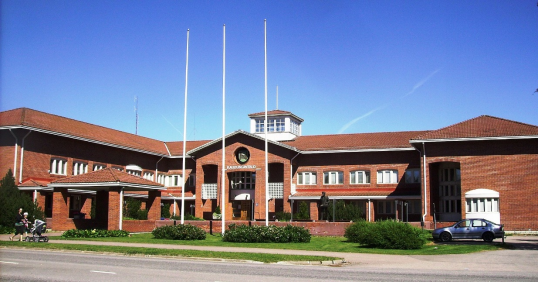
https://fi.wikipedia.org/wiki/Nivala
https://www.nivala.fi/
二、自然地理
1.地理条件
Naturally, Nivala belongs to the grain landscape of Northern Ostrobothnia, where the predominant landscape factor is the evenness of surface shapes. Extensive cultivation openings spread along the Kalajoki River, which flows through the municipality.
The bedrock of the municipality varies in rock composition. There is gneiss and mica in the western and central parts of the municipality and quartz diorite in the south-eastern parts. There are also gabbro and peridotite areas in the region where ore issues have been found. Nickel finds have also been made in the Maliskylä, Haapaperä and Hosionperä areas. The bedrock is covered with movable soils almost everywhere. Moraine is the most common soil type in the northeast corner of the municipality, but it is also abundant in the Kalajoki valley. There are clay soils especially in the Ypyy church village and Jokikylä areas. Minor gravel andsand formations are concentrated in the northern and southwestern parts of the municipality.
The relative elevation differences in the area are usually 0–10 m, in the northeast and southwest 10–20 m. At the southwestern boundary, the elevation differences rise to 20–50 m in a narrow area. The terrain is the lowest in the Kalajoki valley, which is 70–80 meters high. The ground level rises above the municipality's north-eastern and south-western boundaries by an altitude curve of more than 100 m. The highest hills rise 138 m on the northeastern border and 134 m on the southwestern border. The waters of Nivala belong almost entirely to the Kalajoki watershed. The main catchment area is the Kalajoki River, which originates from Reisjärvi and is home to several small tributaries. The largest of these is Haapaveden the side of suolalakeuksilta receiving waters Malisjoki. The width of the fish river at Nivala is about 50 meters, but when flooded, it spreads over a much wider area. In order to eliminate flood damage, the regulation of the Kalajoki River was started as early as 1959. The largest lake in the municipality is Pidisjärvi south of the municipal center. Smaller lakes are Suojärvi in the southern corner and Erkkisjärvi in the eastern part.
The vegetation of Nivala is dominated by extensive, uniform and intensively cultivated fields. More than 70% of the fields are sandy and loamy soils, which are very good arable land. Almost half of Nivala's area is vegetated forest land. The predominant forest type is a dry fabric with pine as its predominant tree. Half of the forest area is pine, a third spruce and the rest deciduous.
Nivala comprises mainly of swamps area, but bogs are also abundant. The Rimpineva area is part of a national mire conservation program. Rimpineva is also the most important bird nesting area in the region.
https://fi.wikipedia.org/wiki/Nivala
2.交通情况
Being a bit off the beaten track, the best way to get in is driving, and having your own car is also useful if you want to move about outside the town center. Nivala is a two hour drive from Oulu.
Nivala is 100km from Kokkola, 160km from Oulu, 150km from Kajaani, 27km from Haapajarvi, and 490km from the capitol Helsinki, which is about a 5 and a half hour drive.
https://fi.wikipedia.org/wiki/Nivala
三、经济发展和规模
Nivala is a rural town and is one of Finland's top localities in milk and meat production. These days, the majority of people living in Nivala gain their livelihood in the service sector, just over 30 per cent in industry and about 20 per cent in primary production, mainly through agriculture.
For Nivala, the 2019 financial statements show a deficit of EUR 573,019. Correspondingly, the group is in surplus EUR 1.19 million. In the future, the city must be able to look at structures in connection with strategy work so that the service structures meet service needs as well as possible. In the Spring and Winter the Corona Virus situation, which has become a pandemic epidemic, will have a strong impact on the kingdom, the region and thus also to the economy of the city of Nivala.
Overall, 2019 has been fruitful and forward-looking for the Nivala City Group. New projects have been launched.
The income of the investment part includes financial contributions to investments and income from the sale of fixed assets for the year 2019. In the financial statements, the sales revenue of the investment part totaled EUR 134,498.51. Revenue from sales of real estate amounted to EUR 23 427, land sales to EUR 2 995, and office equipment leasing. EUR 108,276 was recognized as income from the exchange of the agreement. The financial contributions of the investment part were recognized as income for the financial year in total 9,900 euros. The total amount of investment expenses was EUR 3,608,033.20.
https://www.nivala.fi/information-about-nivala
四、产业特点/重点项目
In Nivala's Industrial Park - the largest in Finland, there are about one hundred enterprises and a thousand work places. The local businesses operate in international markets and are among the top in Finland, and the construction industry is strong. The main fields of industry in Nivala are high technology, wood and metal. In the Technology Center Nitek, there are high technology enterprises, education and development organizations. The Kerttu Saalasti Institute, a regional unit of the University of Oulu, does notable micro-enterprise and metal research.
Nivala's oldest industries were tar burning and the production of potash and sage. There were also mills and sawmills in the area and later dairies. Nivala first actual industrial plant was manufactured skins Nivala Nahkimo, which started operations in 1873. Mainly engaged in the timber industry Ltd. steep rapids, later Nivala Oy, founded in 1920. The Great Hunger Season financial distress caused by the summer of 1932 the famous Nivala konikapinan. In 2004–2006, the River Valley Opera Center performed the Pula Opera, which tells of a cone revolt.
https://www.nivala.fi/information-about-nivala
五、风景名胜,景点( attractions)
1. Kyösti and Kalervo Kallio Museum
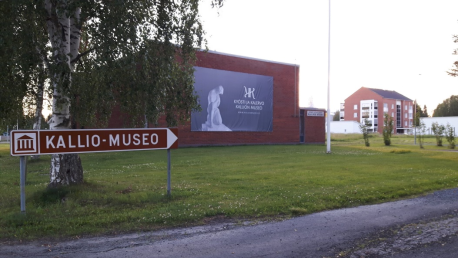
Kyösti Kallio was a peasant, clearer, farmer from Nivala, a promoter of national self-esteem and co-operation. Kallio was born on April 10, 1873 in Ylivieska and died on December 19, 1940 at Helsinki station. He served as a Member of Parliament from 1904 to 1937 and as President of the Republic from 1937 to 1940.
The president's son Kalervo Kallio (1909-1969) was a prolific sculptor, with a total of more than 400 works he made. In particular, he became known for his portraits, which he made in considerable numbers both at home and abroad.
The Kyösti and Kalervo Kallio Museum Foundation was founded in Nivala in 1973. The purpose of the foundation is to collect artefacts and archive material related to the life work of Kyösti and Kalervo Kallio.
https://www.kalliomuseo.fi/museo/#tietoa
2. Homeland Museum Katvala
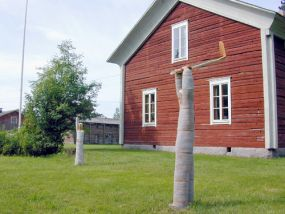
Homeland Museum Katvala stores, preserves and exhibits artefacts related to Nivala life from different eras at the local museum in Katvala. The Katvala museum area has been built since 1959, when the Nivala Society. bought from the parish the plot of office of the office in Kanttorila. As a canteen, the area had been in the mid-19th century.
In Katvala, the buildings of the old office space include a barn, a barn, a pig farm and one of the fences. Over the decades, more than a dozen traditional buildings have been moved to the museum area. The main courtyard of the museum depicts a Nivala peasant house from the turn of the century. The main building is the former Niemi house from Jokikylä, it was built by Erkki Erkinpoika Junttila at the turn of the 1880s and 1890s.
As a local museum, Katvala specializes in agriculture, animal husbandry, tar burning and funeral tradition. The agricultural tool hall displays agricultural tools from the 19th century to mechanization. A tar cabin was built in the area, the idea for which was invented in 1863 by Otto Korkiakoski, a crofter from Nivala.
In the autumn of 2004, a permanent wartime exhibition was gathered for Pikkupuoli in cooperation with veterans' organizations. The exhibition tells about the wartime life of the people of Nivala on the war and home fronts. On the small side, Kustaa Vilkuna's study is also on display.
https://www.nivalaseura.fi/kotiseutumuseo_katvala/
3. Uikon Taikaa Town Festival and Rebellion-Week Festival Events
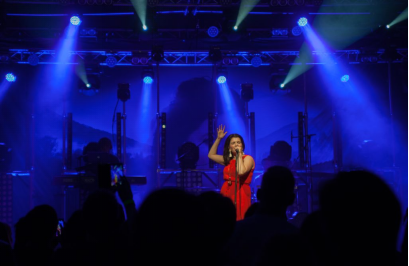
Uikon Taikaa, ’Uikko Magic’ town festival and Kapina-Viikko ’Rebellion-Week’, named after the peasant uprising, both in July, are full of events, a many-sided program, culture and sports. The library offers reading experiences and there are art exhibitions in the Tillari art gallery all year round.
六、历史文化
1.历史
The Nivala region was already inhabited during the Stone Age. Weapons of the pre- ceramic period have been made in Konttila, Pajula and the Erkkisjärvi region. In Järjakpää, Sarjakylä, on the shores of Lake Erkkisjärvi, a residence has been found during the comb-ceramic period.
The Nivala regions were long inhabited by Lapps, whose memories include such place names as Lapinniemi, Lapinvainio and Lapintuli in Välikylä. From the 8th century onwards, Kainuu and Pirkkala bottom visitors came to the area, which were later joined by inland Häme residents. Gradually, the inhabitants of the Kalajoki Valley estuary took over the area. Permanent settlements in the region did not emerge until the 16th century. Initially, birch burning was practiced, which gave way to arable farming and tar burning in the 17th century out of the way. The peasants of the region transported their tar barrels along the river to the Kalajoki market. The new clearing work in the region was hampered by constantly recurring roof years, wars and heavy taxation. In the 17th century, there were decay years every decade. The Russians conquered the region in 1714, when the suffering of great hatred began. As a result of troubled times, Pidisjärvi had only two inhabited farms in 1719. It was only after the petty hatred that the population of the region began to grow rapidly in the mid-18th century. In terms of population and population density, Nivala developed into the core area of the river valley.
The Nivala region originally belonged ecclesiastically to the parish of Saloinen and from 1540 to Kalajoki, whose first inhabitant was Niva-Kaija, according to Kyösti Wilkuna, who named his house Nivala. In 1693 it became part of the Haapajärvi Chapel Parish. A private preaching room was built on Lake Pidisjärvi in 1682, but its own rectory was not obtained until 1782. In 1782 Ylivieska was annexed to the parish area Intermediate village. The chapel was granted rights to Pidisjärvi in 1802. The following year, the chapel parish received a new church to replace the dilapidated church built in 1761. In 1838, Pidisjärvi became the chapel of the independent Haapajärvi parish. Nivala was separated as an independent parish by an imperial letter of order on May 11, 1868. At that time, the name of the parish was also changed to Nivala. The municipality of Nivala is a year older than the parish, it was founded in 1867. In 1805 there were more than 1,500 inhabitants and in 1860 the limit of 4,500 inhabitants was exceeded.
In the 19th century, Nivala's life was drastic. The Nivala forest robbers “knife-rivers” were known throughout the county. Counterbalance to moral decay was accompanied by a strong spiritual life. Under the leadership of Niilo Kustaa Malmberg, the region became the center of revival. During the great years of frost and famine in the 1860s, the Lestadian revival movement also gained support.
Nivala's oldest industries were tar burning and the production of potash and sage. There were also mills and sawmills in the area and later dairies. Nivala first actual industrial plant was manufactured skins Nivala Nahkimo, which started operations in 1873. Mainly engaged in the timber industry Ltd. steep rapids, later Nivala Oy, founded in 1920. The Great Hunger Season financial distress caused by the summer of 1932 the famous Nivala konikapinan. In 2004–2006, the River Valley Opera Center performed the Pula Opera, which tells of a cone revolt.
Nivala is also known as the residence of President Kyösti Kallio. Kallio was born in Ylivieska in 1873. Kallio moved to Nivala in 1895, when he bought the Heikkilä farm. In the late 1930s, Heikkilä developed into the largest farm in Oulu County under the care of the rock. He also moved time from Rivaka’s host to many social activities. Kallio's career went the Reichstag man - and ministerial activities through 1937 as president. The Winter War exhausted Kallio, and he resigned in 1940. When the journey home to Nivala began, Kallio died in front of an honorary company at Helsinki Central Station.
In 1942, the Makola mine was opened, from which nickel - copper ore was mined until the mid-1950s, when the mine ran out. The new Malmio was discovered north of Makola in Hitura in 1962. Work began in Hitura in 1980. In 2010, the aim was to secure the mine's operations, and at that time it was assumed that the nickel reserves would be sufficient for at least six years. However, production at the Hitura mine was suspended in 2013 and the Hitura mining company went bankrupt in 2015. The final closure of the Hitura mine began in 2017.
https://fi.wikipedia.org/wiki/Nivala
2. 文化体育
Nivala is known for its homeland work and its spirit of rebellion. Homeland work is maintained by the Nivala Society. The visible symbol of homework is the windmill right in the center of Nivala. Indeed, locals are sometimes playfully called windmill-harders. A little from the center towards Lake Haapajärvi is the Katvala Peasant Museum area maintained by the Nivala Society, which consists of numerous historical buildings.
七、其他信息
Nivala is also a strong educational city. The city has 13 primary schools and its own high school. Level II vocational education is provided by the Nivala Vocational College for about 880 students, and there is also an adult education center and the Jokilaakso Music College in the area. Higher education is provided by the Oulu Southern Institute, a regional unit of the University of Oulu located in Nivala.
https://www.nivalaseura.fi/tietoa_nivalasta/
八、联系方式
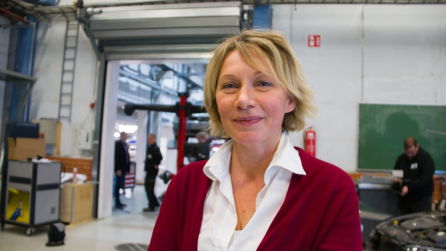
Mayor: Päivi Karikumpu
Tel. 040 344 7211
kirjaamo (ät) nivala.fi
https://www.nivala.fi/yhteystiedot
